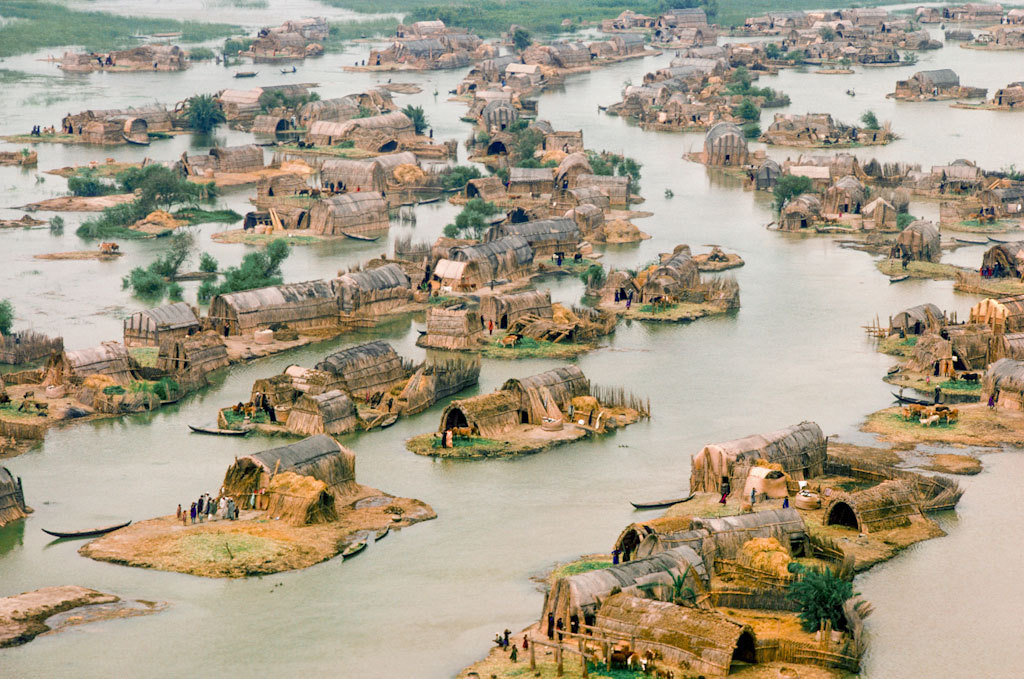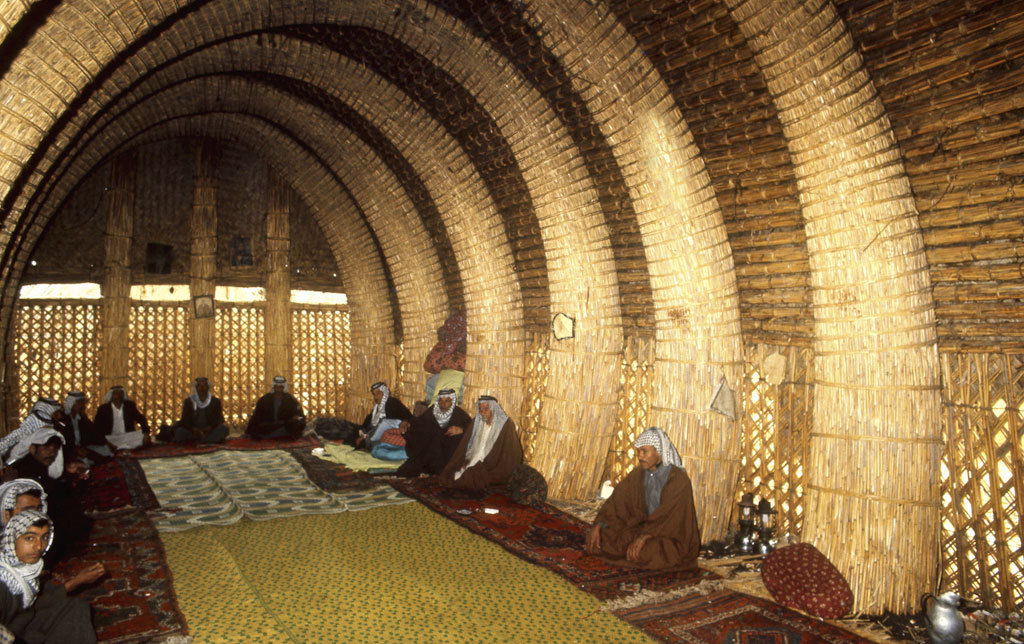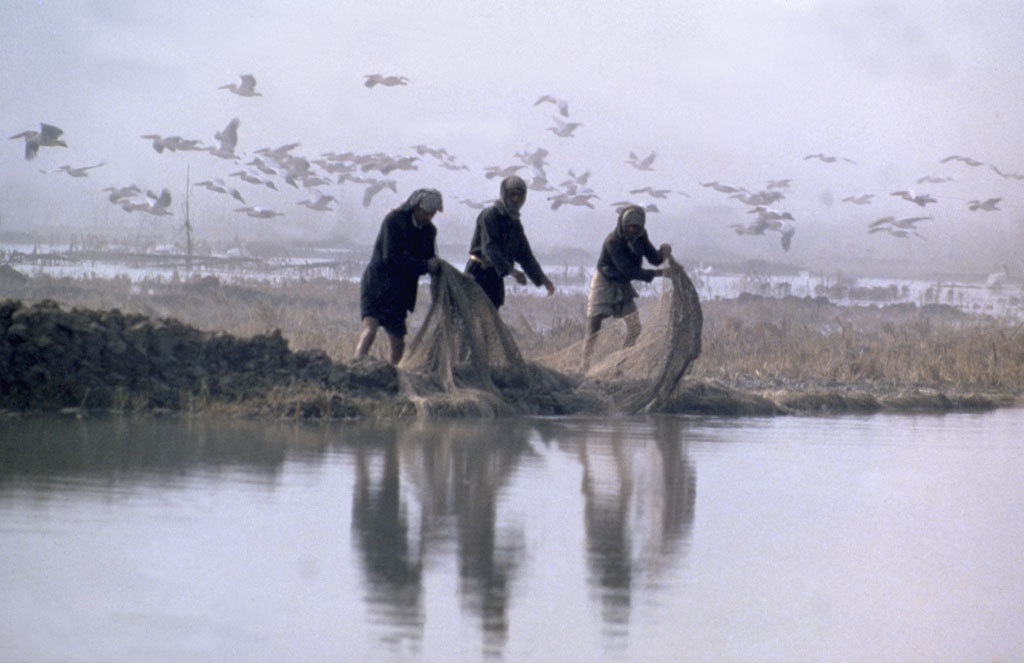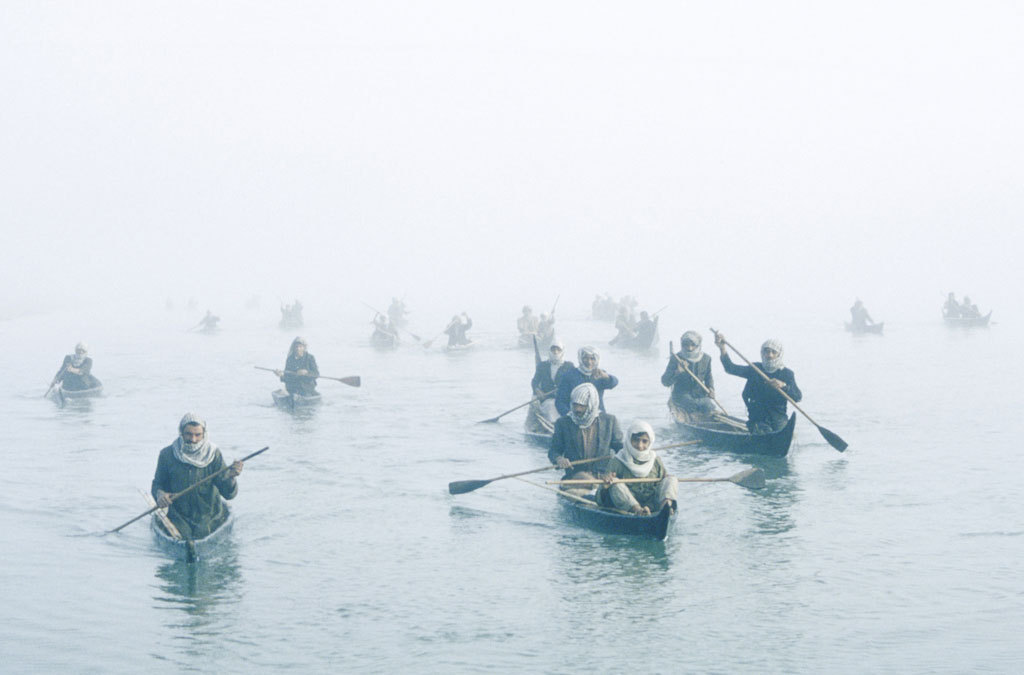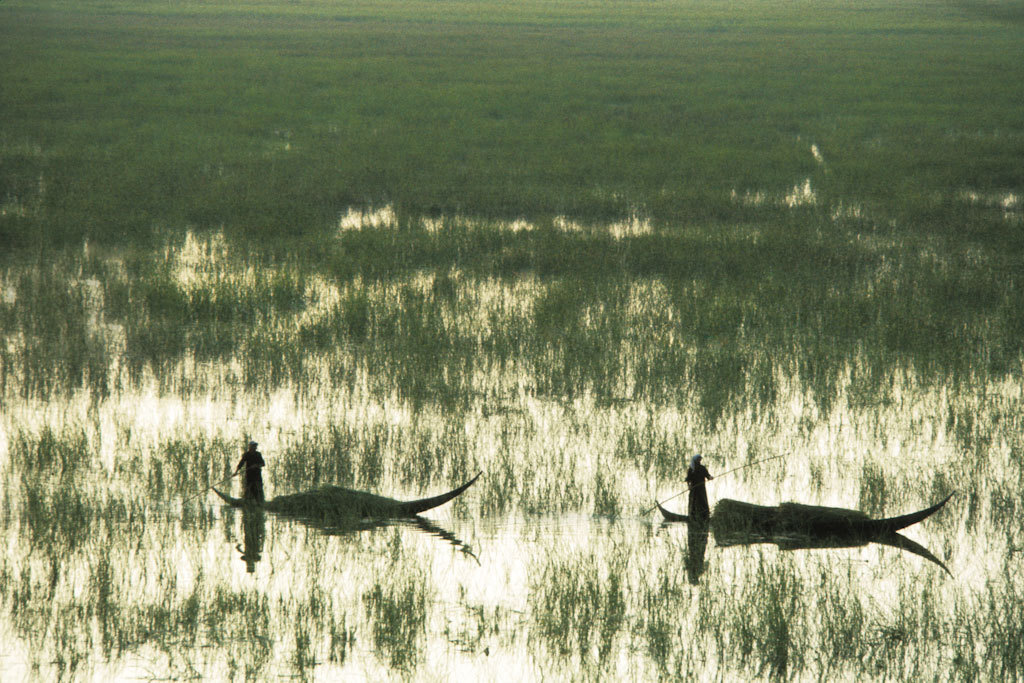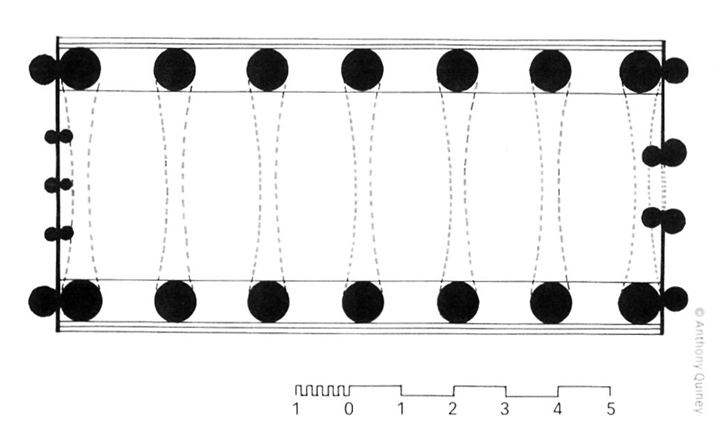V 26 |
Mudhif |
type |
|
place |
|
population |
The people of the marshes of the river Tigris marshes live by hunting, fishing and keeping water buffalo. They live on artificial islands, where they build houses whose form has not changed for 5000 years. Everything on these floating islands is made of reeds, including the houses of varying sizes but similar structures and the pens for the water buffalo. Parents and children live in their own smaller houses, while a larger, more showy building called the Mudhif is where the family receives guests. The small islands also accommodate a pen for the animals, a haystack and the only building made of clay, the baking oven.
Two hundred generations of Marsh Arabs have preserved and perfected the techniques of building these houses. Harvested and dried reeds are gathered into bundles which are then stuck into deep holes in the soil of the artificial island in rows two metres apart. The bundles are bent into arches towards the opposite row, overlapping by 1-2 metres, and are tightly bound together. The horseshoes thus formed are the overlaid by purlins (crossbeams) made of thinner bundles of reeds laid lengthwise, and the arches are covered with mats made of rushes. The two ends of the rows of arches are closed off by pillars made of reed bundles and a looser woven mat covering which offers good ventilation.
The houses have relatively short life spans, as the bundles of reeds thrust into the soil rot away within 7-10 years. For this reason the marsh Arabs do not build a completely new house but instead cut off the base and live for another 7 years in a slightly lower Mudhif.
The 5000 year long idyll came to an end in 1992. The Iraqi leader, Saddam Hussein had had enough of the tradition of Shi’ite rebels finding refuge in the region so he had his engineers draw up a plan for the draining of the marshes. The100 000 Marsh Arabs living in the area fled and their floating islands and reed houses were destroyed. Although the current government is trying to reverse the process, their culture will never be what it was.

